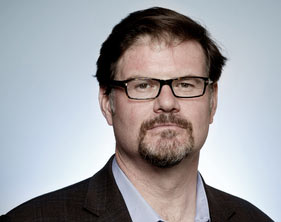It's Infrastructure Week (again), and who among us can contain his excitement?
The president, for one.
According to reports, President Trump wanted to announce the biggest investment in public works since President Eisenhower unveiled the interstate highway system. But in the wake of tax cuts, the real deficit was too big to close what Trump calls "the infrastructure deficit." So he had to settle for a plan that would spend $200 billion in federal taxpayer money over the next decade and lay the rest of the $1.5 trillion on state and local taxpayers.
It almost surely won't fly. Many states are as broke as the federal government -- and they can't print money.
In his Big Building, Big Spending ambitions, Trump is at his most conventional. Politicians, as transportation expert Randal O'Toole puts it, have a deep-seated bias in favor of "ribbon-cutting over brooms." They just love wielding a giant pair of scissors to cut a shiny ribbon on a new project. You can put your name on a new tunnel or bridge. It's harder to take credit for fixing an existing one.
Even Trump's insistence that our infrastructure is "crumbling" is among the most enduring clichés of American politics. A search of LexisNexis shows that America's infrastructure has been crumbling since the late 1970s. And it's simply not true. The most recent data is from 2012, when President Obama was insisting that our infrastructure was crumbling. At that time, 80 percent of our highways were in acceptable shape or better. Nearly 97 percent of rural roads met that grade.
Bridge failures in Washington state in 2013 and Minnesota in 2007 were greeted as symbolic proof of systemic disrepair. But the Washington state bridge collapsed because a truck driver carrying an oversized load ignored posted warnings. It would have collapsed if it had been brand-new. And the Minnesota collapse was the result of a construction defect.
Meanwhile, the conditions of our bridges have been improving consistently for the last two decades.
Of course some American infrastructure could use updating. The problem, however, isn't under-investment. In 2014, according to the Congressional Budget Office, federal state and local governments spent $416 billion on infrastructure.
The real problem is that we don't spend money on the right problems.
A recent exposé by the New York Times showed that politicians and the unions that own them are to blame for the Big Apple's deteriorating subway system. For years they've raided transportation funds for pet projects, like failing upstate ski resorts.
Beyond New York, a perfect storm of ribbon-cutting fetishizing, environmentalism and envy of other countries has led to high-speed-rail mania. Although zippy trains are nifty, they zoom past the fact America has the best rail system -- for our needs. In Europe, trucks move goods and trains move people. In America, we do it the other way around.
Trump's proposal does include a few worthwhile ambitions, such as streamlining the approval process for public works and improving incentives to come in under budget.
After the 1994 Northridge earthquake, then-California Gov. Pete Wilson used his emergency powers to bypass the usual red tape and unionized extortion that drive up costs and string out construction time. Experts thought it would take two years to fix the Santa Monica Freeway. Wilson offered contractors huge cash bonuses to meet tight deadlines. The repairs were completed in less than three months.
The Trump plan, however, would leave it to Congress to figure out how to de-boondoggle-ize infrastructure projects, which is not a cause for optimism.
Trump sees infrastructure investment pretty much the same way Democrats do -- as a jobs program. That doesn't work either (see: Japan). But if Trump had begun his presidency with building as his top priority, he would have won a lot of bipartisan support and turned the GOP into a big-government party much sooner.
Alas -- or, depending on your point of view, lucky break -- he spent his capital, political and fiscal, elsewhere. And now there's none left for the riot of ribbon-cutting he wanted.
Comment by clicking here.
Jonah Goldberg is a fellow at the American Enterprise Institute and editor-at-large of National Review Online.


 Contact The Editor
Contact The Editor
 Articles By This Author
Articles By This Author